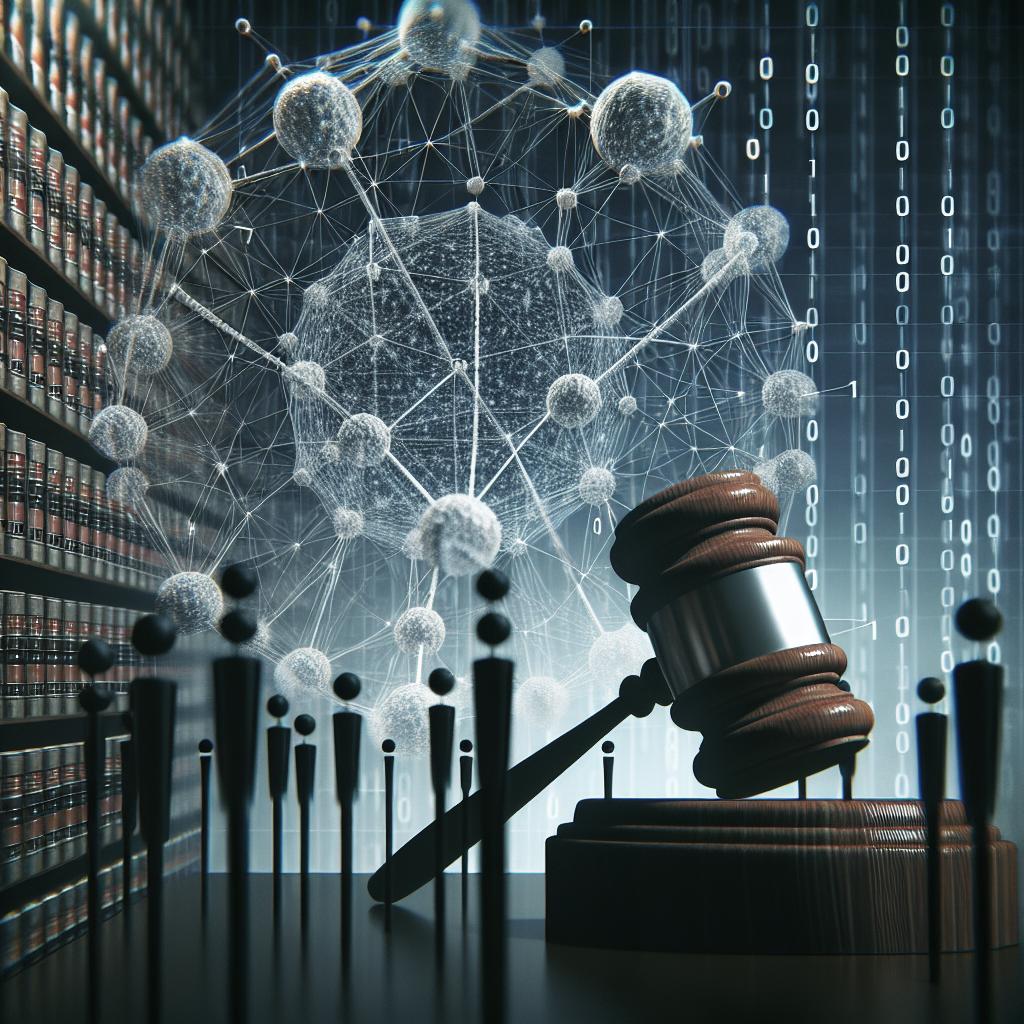“`html
In today’s digital era, cybercrime has surged, posing significant challenges to law enforcement and the judicial system. As the boundaries of cyberspace expand, so do the complexities involved in tackling cybercriminal activities. This blog post delves into the intricate nature of prosecuting cybercrime, considering factors such as jurisdictional issues, technological advancements, and the ever-evolving tactics of cybercriminals. By examining various aspects of these challenges and reviewing expert insights, we shed light on the dynamic landscape of cybercrime prosecution and potential future developments in this critical arena.
Image
Cybercrime poses unique challenges in part due to its virtual, borderless nature. With perpetrators and victims possibly located in different countries, jurisdictional issues become a significant hurdle. Determining which legal entity has the right to prosecute can lead to diplomatic disputes and complicates the enforcement of laws.
Moreover, digital evidence is fragile and often difficult to obtain. Cybercriminals can easily conceal their electronic tracks using sophisticated methods such as encryption or routing traffic through multiple countries. Preserving the integrity of digital evidence and ensuring it’s admissible in court is an ongoing battle for prosecutors.
Image
The rapid evolution of technology further complicates the pursuit of cybercriminals. New tools and methods for digital deception are constantly emerging, allowing cybercriminals to stay one step ahead of law enforcement. Keeping abreast of these technologies demands continuous education and resource investment from legal authorities.
Additionally, the anonymity afforded by the internet emboldens cybercriminals. With sophisticated anonymity tools such as Tor, identifying and apprehending cybercriminals is a daunting challenge that requires cutting-edge technical expertise and international collaboration.
Topics
The panellists
During a recent forum on cybercrime, experts highlighted the multifaceted challenges of prosecuting such crimes. The panellists, hailing from diverse backgrounds such as law enforcement, cybersecurity, and international law, unanimously agreed on the need for a multifaceted approach.
These experts emphasized cooperation across jurisdictions and industries as crucial to effectively tackle cybercrime. They advocated for collaborative frameworks that would facilitate real-time information sharing and unified strategies to outpace cybercriminals.
CrowdStrike Chaos Highlights Key Cyber Vulnerabilities with Software Updates
The recent CrowdStrike incident emphasized another prosecutorial challenge: software vulnerabilities. As seen in this case, unpatched systems can be exploited by cybercriminals, turning a blind spot into a significant threat.
Prosecutors face dilemmas when vulnerable software plays a role in cybercrimes. Determining culpability can be complex, with potential legal consequences both for the attackers and organizations responsible for software maintenance.
What are the Biggest Challenges to Federal Cybersecurity? (High Risk Update)
Federal cybersecurity remains an area of concern, with periodic updates revealing ongoing vulnerabilities. Challenges here include maintaining legacy systems, insufficient staffing, and overcoming bureaucratic inertia.
These issues reflect broader trends seen in cybercrime prosecution. For federal entities, balancing these organizational weaknesses while strengthening prosecutorial approaches requires strategic planning and resource allocation.
The Effectiveness of Economic Sanctions At Risk from Digital Asset Growth.
The rise of digital assets presents new challenges for prosecuting cybercrimes, particularly those related to financial fraud and sanctions evasion. Cryptocurrencies, for example, offer a degree of anonymity that complicates criminal tracking.
Prosecutors must develop new skills and strategies to trace these digital assets effectively. As digital financial systems evolve, enhancing capabilities to address these challenges is paramount for maintaining economic security.
GAO Contacts
Navigating the complexities of cybercrime requires diligent communication with organizations like the Government Accountability Office (GAO). These contacts provide crucial data and insights to guide law enforcement and judicial processes.
Through regular consultations and reports, the GAO can assist prosecutors in understanding technological trends and policy gaps, catalyzing improvements in legal and tactical approaches to cybercrime.
Related Posts
Exploring related posts helps broaden the understanding of cybercrime’s nature and its prosecution challenges. These posts may include case studies, expert interviews, and analyses of recent trends and technologies.
Engaging with related content allows readers to contextualize the challenges discussed, fostering a deeper comprehension of the ongoing battle against cybercrime and prompting them to consider innovative solutions.
Related Products
For those looking to further explore or combat cybercrime, various products can enhance understanding and capabilities. These range from cybersecurity software to educational materials tailored to legal professionals.
Leveraging such resources is vital. They promise to empower both individuals and organizations in navigating the complex cyber landscape effectively, enhancing preparedness against potential threats.
Product Number
When considering products related to cybercrime prosecution, understanding the unique identifier or product number can be essential for referencing materials or software accurately.
Accurate product tracking facilitates the coordination between different jurisdictions and organizations, ensuring the right tools are deployed effectively in the fight against cybercrime.
Future Prospects
| Challenge | Description | Solution |
|---|---|---|
| Jurisdiction Issues | Cybercrime transcends borders, complicating legal jurisdiction determinations. | International collaboration and legal frameworks. |
| Technological Advancements | Rapid tech evolution enables sophisticated cybercriminal tactics. | Continuous education and cutting-edge technology adoption. |
| Anonymity and Encryption | Tools like Tor make it difficult to identify cybercriminals. | Developing advanced decryption methods and fostering international cooperation. |
| Software Vulnerabilities | Not addressing vulnerabilities can lead to exploitation. | Regularly update and patch software, strengthen cyber hygiene practices. |
| Digital Assets | Grow in use, offering anonymity that complicates crime tracking. | Trained specialists in crypto tracking and enhanced regulatory frameworks. |
“`


